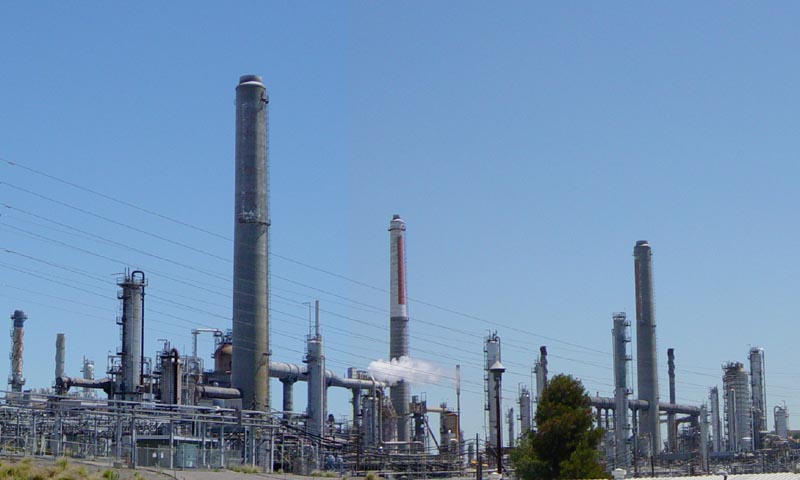Source: Wikimedia Commons
Corporate shakeups can be used to get better value for shareholders. Valero Energy (VLO +1.77%) is using spinoffs to maximize value for its shareholders by getting a higher valuation for its noncore assets. Valero spun off CST Brands, its retail division, and brought in $500 million in net cash. CST Brands is now trading at twice the earnings valuation of Valero, and Valero still holds 20% of CST Brands common stock, worth ~$450 million.
Future divestments
Valero is planning on winding down its 20% stake in CST Brands over the next 18 months. Starting in the third quarter of 2013, Valero will save $50 million in G&A expenses annually from the spinoff.
Valero also plans on converting its logistics business to an MLP. Valero noted that refiners trade at 3-5 times EBITDA versus 10-15 EBIDTA for logistic MLPs. This means that Valero will be able to fetch two to five times more for its logistics business than is being priced into the stock today.
Valero is planning on spinning off the business in the first half of 2014, which could be a catalyst for the stock. Valero's logistics business operates pipelines, rail cars, rail unloading facilities, ports, barges, tanks, and ships.
Valero is buying 5,320 rail cars that will be delivered between the fourth quarter of 2012 through the second quarter of 2015. The purpose of this purchase is to link Valero's refineries to cheap crude from places like the Bakken to achieve a better crack spread.
Future plans
The logistics business spinoff will significantly balance Valero's balance sheet, which will allow Valero to continue with its growth projects. Valero is planning on building an additional 117 million barrels per day of capacity for hydrocracking, with plans to add an additional 50 mbpd of capacity in the future. Hydrocracking is where you take gas oil and turn it into diesel and jet fuel.
If the Keystone XL pipeline gets approved it will be very beneficial to Valero, as it will be able to get cheaper crude from Western Canada and the Bakken, which will increase its crack spread. Most investors are worried that the spread between oil from the Midwest and WTI will keep shrinking, which will make Valero's crack spread contract. The Keystone XL pipeline gives Valero a way around that.
Non-fossil fuel
For those of you who see fossil fuels as the end of the world, hold up a second. Valero has just brought online a plant joint venture that has the capacity to produce 10,000 barrels a day of renewable diesel from waste cooking oil, animal fat, and corn oil. Valero is invested in more than just fossil fuels; it also is dipping its toe into other forms of energy.
Another refiner is also shifting its focus to boost returns, and it is the product of an oil major splitting into two.
The road less traveled
Phillips 66 (PSX +0.06%) currently has most of its processing capacity devoted to natural gas. Phillips 66 processes ~10 million boe/d of natural gas and ~8 million bpd of NGL crude oil. Going forward, Phillips 66 is seeing 6% CAGR (compound annual growth rate) in NGL and crude oil refining capacity versus just 2% CAGR for natural gas over seven years. This is due to rising gasoline and plummeting natural gas prices.
Phillips 66 switching to crude oil and NGL refining will boost its margins and increase cash flow. While investors are still worried about shrinking crack spreads, Phillips 66 might be able to compensate with more NGL and crude oil refining capacity. Phillips 66 is also invested heavily in NGL pipelines, which offer investors stable cash flow and allows Phillips 66 to invest back in the business.
Phillips 66, through its DCP Midstream asset (a JV), recently brought the Sand Hills NGL pipeline online. Sand Hills will have an initial 200,000 bpd capacity and will carry NGL out of the Permian and Eagle Ford area, which is experiencing ridiculous levels of output growth.
DCP Midstream has stated that it could increase capacity up to 350,000 bpd if more pump stations are brought online, and one would expect DCP to want to increase capacity to capitalize on booming output.
Final thoughts
Some companies end up spinning off assets so they can fetch higher valuations. That means the parent company can use the money from the sale to boost cash flow through further investments in its business and by lowering costs. Corporate shakeups can maximize shareholder value and allow for companies to focus on better, faster-growing assets.
